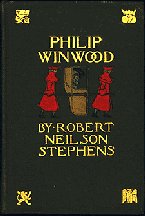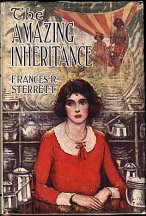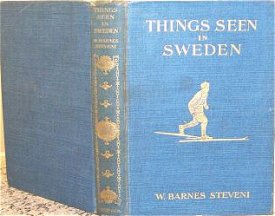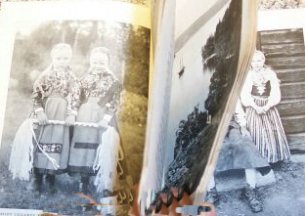In Darkest Africa (2 vols.) or The Quest, rescue, and
retreat of Emin, governor of Equatoria.~ 1891 with two steel engravings
and 150 illustrations and maps. in two volumes. NY: Charles Scribner and
Sons ~ volumes 1, with 547 pages and 2, with 540 pages ~ Art by Edouard
Riou (1833-1900) Illustrated with two steel engravings (frontispiece illustrations,
with tissue guards), and one hundred and fifty illustrations and maps.
ALL 3 FOLDING MAPS ARE PRESENT, as called for... One color folding map
in cloth pocket in back of Volume I: "A Map Of The Great Forest Region,
Showing The Route Of The Emin Pasha Relief Expedition From The River Congo
To Victoria Nyanza." Two color folding maps in pocket in back of Volume
II: "A Map Of The Route Of The Emin Pasha Relief Expedition Through Africa";
"A Map Of Emin Pasha's Province."
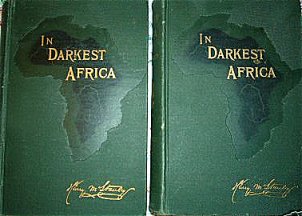 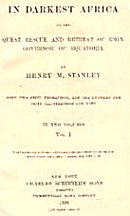  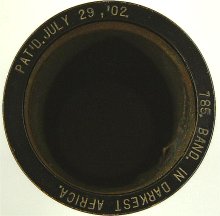
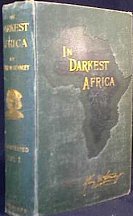 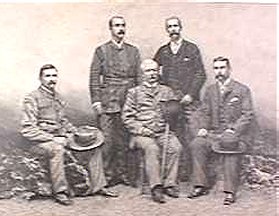 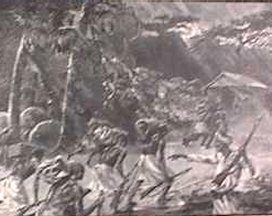
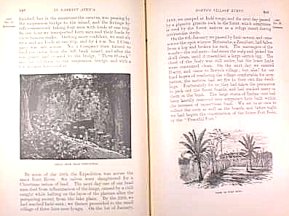
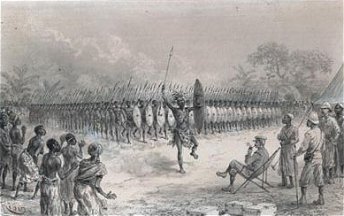 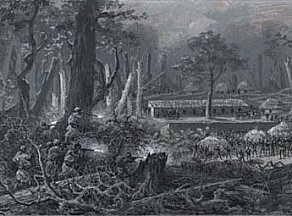
At the turn of the century
(the 1890's that is) the interior of the African continent was largely
unknown to the American and European public. Accounts of expeditions there
meant Danger! Adventure! Intrigue! Readers thrilled by these stories longed
to follow in the footsteps of the great explorers and of course one of
the greatest was Henry M. Stanley. He had already achieved fame from his
quest to find Dr. Livingstone, and in 1888 he led an expedition to come
to the aid of Mehmed Emin Pasha. In Darkest Africa is his
account of what happened.The Pasha was born Edward Schnitzler in Germany,
had assumed the title "Emin Effendi Hakim" (the faithful physician) while
employed as a doctor in Khartoum, and had later been appointed the
local governor in the southern Sudan. (Confused yet?) He had been forced
from Khartoum into retreat to the shores of Lake Albert by a revolt led
by the Islamic holy man known as the "Mahdi." Stanley had met Emin on an
earlier expedition, and was felt to be the logical choice to lead this
new campaign.
Volume One of this
two-volume set details the political events that lead up to the revolt,
and the progress of Stanley from the mouth of the Congo River to Lake Albert
(in present day Uganda) a journey of over 1,400 miles. They traveled by
steamers (one being the Stanley, of course), and they had their own steel
frame "canoe," which could be broken down into sections for portage. Legends
about dwarves living in the forests of central Africa had been widely circulated,
and Stanley was certain he had met them in the tribe of the Pygmies near
Fort Bodo, one of his most exciting encounters. He also provides descriptions
of the wide variety of native peoples, villages and terrain through which
he traveled. Marching through the forests he writes:
…sections of the primeval
forest separated each village; along the track were pitfalls for some kind
of large forest game, or bow-traps fixed for small animals, such as rabbits,
squirrels, rats, small monkeys. In the neighbourhood of each village the
skewers were plentiful in the ground,…The main approaches to the many villages
were studded with these poisoned skewers, which made every one except the
booted whites tread most gingerly. Nor could the Europeans be altogether
indifferent, for slightly leaning, the skewer was quite capable of
piercing the thickest boot-leather and burying the splinters of its head
deep in the foot…
Stanley and his men had
to contend with disease, desertions, and lack of food, as well as attacks
upon them by hostile natives. In an incident that later led to questions
about Stanley's judgment, he left a detachment of men at Yambuya to await
the arrival of a promised 600 porters with orders for them to rejoin the
main party. They never did, and he is careful to document his version of
the affair in this book.
Volume Two chronicles
Stanley's reaching the Emin Pasha and finally persuading him to abandon
Lake Albert in 1889. Again he is zealous in his reporting, including accounts
of a personal nature such as his attack of inflammation of the stomach,
as well as those of greater interest to the general reader. Again
they contend with disasters: at one point they must feed 130 people on
a thin butter and milk broth for days on end, at another they fend
off a surprise ambush. In all, 1,500 people made the journey that ended
in Bagamoyo (present day Tanzania).They travelled through the legendary
Ruwenzori range (Uganda), which few Europeans had seen, and which had been
the subject of much speculation by everyone from Greco-Roman to medieval
Arab scholars:
…The fables that have
been woven about it; its relation to the dear old Nile…the Nile of the
Pharaohs, of Joseph, Moses, and the Prophets; its being the source
whence so many springs of the Nile issue -- its being the creator of the
"Sea of Darkness," Lake Albert Edward, from whose bosom the Semliki --
Nile to the West, and the infant Kafur to the East -- emerge…the very mountain
before whose shrine Alexander and Caesar would have worshipped -- if the
poets may be believed; its rare appearance out of the night-black clouds;
its sudden and mysterious apparition…its quaint title -- the Mountains
of the Moon, so often sought in vain; its massive and rugged grandeur,
and immense altitude: all these explain why Ruwenzori demands more than
a brief notice.
Stanley verified that the
Semliki River linked Lake Edward to Lake Albert, which was big news to
those interested in the sources of the Nile. It took them sixteen days
to cross the Semliki valley region:
During that time we had
ten separate rainfalls, several of them lasting over nine hours, while
it thundered daily.Besides this, when we issued out of the forest, and
clung to the grassy foot of the range, at a few hundred feet of altitude
above it, we observed that, as far as we could see, the forest extended
unbroken, except by the numerous banana plantations…No winds could cool
this portion of the valley, or waft the vapours away and clear the atmosphere
from an entire corner of the compass, owing to the extent and great height
of Ruwenzori…
This is an extremely important
book for all those interested in the history of Africa, both for
its descriptions of indigenous peoples and terrain and for what it reveals
about the imperialist attitudes that shaped the course of events. And not
to be entirely irreverent, but if you visit Stanley's grave site in England,
you'll notice that his is a giant stone, surrounded, it seems, by pygmy
stones. We think that Sir Henry Morton Stanley would find this a
fitting tribute to his stature.
Ref: Narrative
Press
Other:
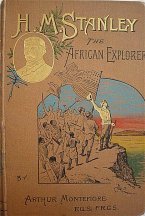 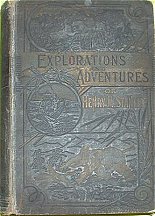 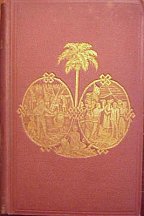  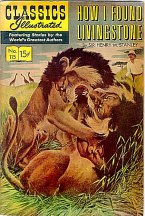 Through
the Dark Continent or the Sources of the Nle Around the Great Lakes
of Equatorial Africa and Down the Livingstone River to the Atlantic Ocean
~ In two volumes: 1878 ~ New York, Harper & Brothers
Through
the Dark Continent or the Sources of the Nle Around the Great Lakes
of Equatorial Africa and Down the Livingstone River to the Atlantic Ocean
~ In two volumes: 1878 ~ New York, Harper & Brothers
Explorations and Adventures
of Henry M. Stanley: 1889
How I found Livingston:
Travels, Adventures and Discoveries in Central Africa: Including an Account
of Four Months Residence with Dr. Livingstone: 1872
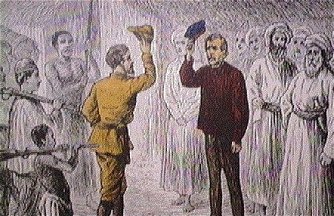 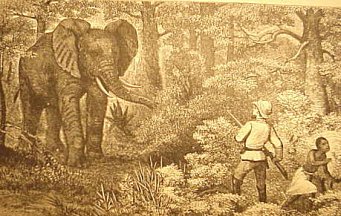
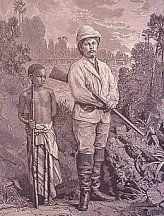 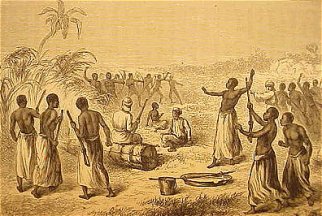
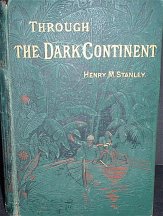 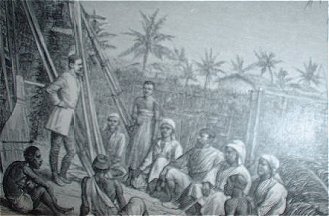
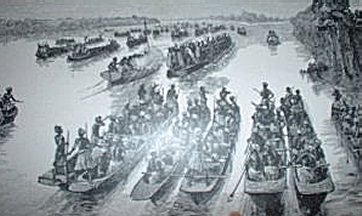 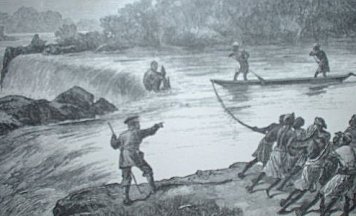
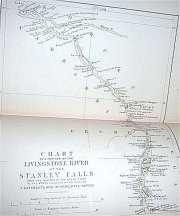 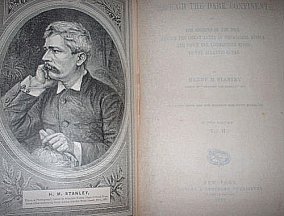
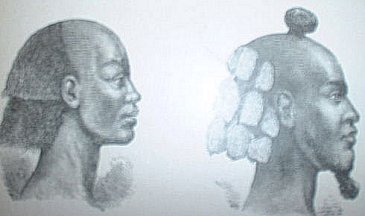  
|
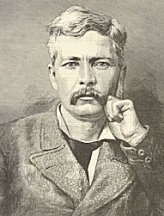 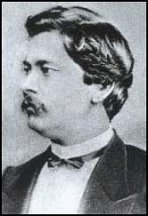 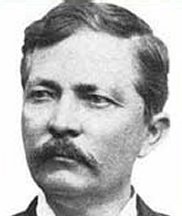
Henry
Morton Stanley was born in Denbigh, Wales, in 1841. He became a
cabin boy and arrived in New Orleans in 1859. He remained in the United
States and served in the Confederate Army during the American Civil War.
After the war he became a freelance journalist. In 1866 George Ward Nichols
interviewed Wild Bill Hickok about his exploits as a gunfighter. The article
appeared in the February, 1867, edition of Harper's New Monthly Magazine.
Newspapers such as the Leavenworth Daily Conservative, Kansas Daily Commonwealth,
Springfield Patriot and the Atchison Daily Champion quickly pointed out
that the article was full of inaccuracies and that Hickok was lying when
he claimed he had killed "hundreds of men". Hickok responded to these
articles by giving an interview to Henry Stanley. The article appeared
in the St.Louis Missouri Democrat in April 1867. It included the following
dialogue: "I say, Mr. Hickok, how many white men have you killed to your
certain knowledge?" After a little deliberation, he replied, "I suppose
I have killed considerably over a hundred." "What made you kill all those
men? Did you kill them without cause or provocation?" "No, by heaven
I never killed one man without good cause." Stanley now joined the
New York Herald and in 1868 accompanied an expedition to Abyssina. He alsovisited
Egypt, Palestine, Turkey, Persia and India. On 10th November, 1871, Stanley
met David Livingstone in Tanganyika. On his return to the United
States he published How I Found Livingstone (1872). Stanley visited Africa
again and after exploring Lake Tanganyika he traced the River Congo to
the sea. This journey resulted in the book, Through the Dark Continent.
After returning to Britain he became a member of the House of Commons for
Lambeth. Sir Henry Morton Stanley died in 1904.
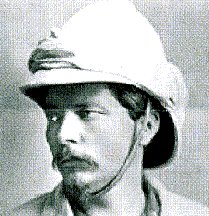 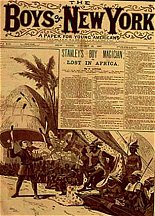 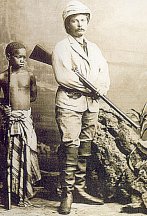
Sir
Henry Morton Stanley (1841-1904) American journalist and adventurer,
who took New York Herald's mission ”to go and find Livingstone”. In his
diary HOW I FOUND LIVINGSTONE (1872) Stanley presents his story with stoicism,
without magnifying his epic adventure of hardships of the journey. He traveled
700 miles in 236 days before he found the ailing Scottish missionary-explorer
David Livingstone on the island of Ujiji. After completing his manhunt
he uttered his famous greeting: "Doctor Livingstone, I presume!" Stanley
was the most effective of explorer of his day, who solved the problems
of the Nile and Congo in 1874-77. He helped create Léopold's Congo
Free State and British possessions on the upper Nile in the 1880s.
Henry Morton Stanley
was born at Denbigh in North Wales, the illegitimate son of John Rowlands
and Elisabeth Parry. At the age of five he was consigned to the St. Asaph
Workhouse, where he received a fair education and where he became a voracious
reader. In 1857 Stanley ran away to sea and led a roving life in America.
At the close of the Civil War, Stanley went to Turkey and Asia Minor as
a newspaper correspondent. In 1867-1868 he was a special correspondent
for the New York Herald. In 1871 Stanley started his expedition to
East Africa. He was deserted by his bearers, plagued by disease and warring
tribes but he found Livingstone near Lake Tanganyika in Ujiji on November
10, 1871. Together they explored the northern end of Lake Tangayika. Livingstone
had journeyed extensively in central and southern Africa from 1840 and
fought to destroy the slave trade. Livingstone died in 1873 on the Shores
of Lake Bagweulu. His body was shipped back to England and buried in Westminster
Abbey. On hearing of his hero's death, Stanley decided to follow up Livingstone's
researches on the Congo/Zaire and Nile systems, and at the same time examine
the findings of Speke, Burton and Baker. When David Livingstone combined
geographical, religious, commercial, and humanitarian goals in his exploration
journeys, Stanley created the direct link between exploration and colonization.
On his second African expedition, which started in 1874, Stanley journeyed
into central Africa to discover suitable colonies for Leopold II of Belgium.
He circumnavigated Victoria Nyanza, proving it to be the second-largest
freshwater lake in the world, discovered the Shimeeyu River, and traced
Congo River from its source to its mouth. He led the first expeditions
of the Belgians to 'prove that the Congo natives were susceptible of civilization
and that the Congo basin was rich enough to repay exploitation'. His revelation
of the commercial possibilities of the region resulted in the setting up
of a large trading venture and led to the founding of the Congo Free
State. In 1877 Stanley made the first complete traverse of the Iruri River,
whose waters flow some 800 miles before joining the Congo in the vicinity
of present-day Kisangani. By the time he abandoned the river to go directly
for Lake Edward, fifty-two of his men were so crippled by leg ulcers and
malnutrition, that he had to leave them on the riverbank at a place he
named Starvation Camp. Stanley made in 1886 a successful lecturing tour
in the United States. The writer Mark Twain introduced him to the
audience in Boston in November by comparing Stanley to Columbus: "Now,
Columbus started out to discover America. Well, he didn't need to do anything
at all but sit in the cabin of his ship and hold his grip and sail straight
on, and America would discover itself. Here it was, barring his passage
the whole length and breadth of the South American continent, and he couldn't
get by it. He'd got to discover it. But Stanley started out to find Doctor
Livingstone, who was scattered abroad, as you may say, over the length
and breadth of a vast slab of Africa as big as the United States. It was
a blind kind of search. He was the worst scattered of men." Stanley
organized the relief expedition in search of Emin Pasha, whom he met on
the Albert Nyanza in 1888. In 1890 Stanley was in England. His story about
his struggle to find Emir Pasha was published in 1890, the year that Joseph
Conrad went to Congo, and later returned to his experiences in Heart of
Darkness. Stanley visited in the following year the United States and Australia
on lecturing tours. In 1899 Stanley was knighted and in 1895-1900 he sat
in Parliament. He died in London on May 10, 1904. Stanley's publications
include fiction and nonfiction. His diary, How I found Livingstone, and
his account of his journey to the sources of the Nile, THROUGH THE DARK
CONTINENT (1878), has been reprinted several times.
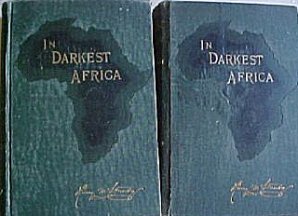 IN
DARKEST AFRICA (1890) is a story of Stanley's 1887-89 expedition, and
depicts among others pygmies who were still mysterious to the outside world.
In adventure books of the nineteenth century, they were usually pictured
as dwarfs. Stanley also wrote about the slave trade. In his book KALULU,
PRINCE, KING, AND SLAVE (1874), set in Central Africa, Stanley told a story
about Selim, a young Arab boy from Zanzibar. Selim is taught to accept
slavery, but on his journey in the Central Africa Selim himself is captured
as a slave. He escapes, befriends an African prince, Kalulu. During his
adventures he learns a new, critical view of his family's values and attitudes
to slavery. - The story was based on Stanley's observation made during
his historical search for Livingstone. In true-life Kalulu, ex-slave acquired
in this journey, visited the US and Britain but was drowned on Stanley's
second expedition in 1874. IN
DARKEST AFRICA (1890) is a story of Stanley's 1887-89 expedition, and
depicts among others pygmies who were still mysterious to the outside world.
In adventure books of the nineteenth century, they were usually pictured
as dwarfs. Stanley also wrote about the slave trade. In his book KALULU,
PRINCE, KING, AND SLAVE (1874), set in Central Africa, Stanley told a story
about Selim, a young Arab boy from Zanzibar. Selim is taught to accept
slavery, but on his journey in the Central Africa Selim himself is captured
as a slave. He escapes, befriends an African prince, Kalulu. During his
adventures he learns a new, critical view of his family's values and attitudes
to slavery. - The story was based on Stanley's observation made during
his historical search for Livingstone. In true-life Kalulu, ex-slave acquired
in this journey, visited the US and Britain but was drowned on Stanley's
second expedition in 1874.

|



































 IN
DARKEST AFRICA (1890) is a story of Stanley's 1887-89 expedition, and
depicts among others pygmies who were still mysterious to the outside world.
In adventure books of the nineteenth century, they were usually pictured
as dwarfs. Stanley also wrote about the slave trade. In his book KALULU,
PRINCE, KING, AND SLAVE (1874), set in Central Africa, Stanley told a story
about Selim, a young Arab boy from Zanzibar. Selim is taught to accept
slavery, but on his journey in the Central Africa Selim himself is captured
as a slave. He escapes, befriends an African prince, Kalulu. During his
adventures he learns a new, critical view of his family's values and attitudes
to slavery. - The story was based on Stanley's observation made during
his historical search for Livingstone. In true-life Kalulu, ex-slave acquired
in this journey, visited the US and Britain but was drowned on Stanley's
second expedition in 1874.
IN
DARKEST AFRICA (1890) is a story of Stanley's 1887-89 expedition, and
depicts among others pygmies who were still mysterious to the outside world.
In adventure books of the nineteenth century, they were usually pictured
as dwarfs. Stanley also wrote about the slave trade. In his book KALULU,
PRINCE, KING, AND SLAVE (1874), set in Central Africa, Stanley told a story
about Selim, a young Arab boy from Zanzibar. Selim is taught to accept
slavery, but on his journey in the Central Africa Selim himself is captured
as a slave. He escapes, befriends an African prince, Kalulu. During his
adventures he learns a new, critical view of his family's values and attitudes
to slavery. - The story was based on Stanley's observation made during
his historical search for Livingstone. In true-life Kalulu, ex-slave acquired
in this journey, visited the US and Britain but was drowned on Stanley's
second expedition in 1874.

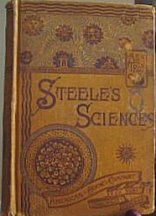
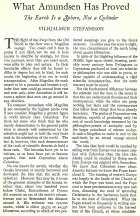
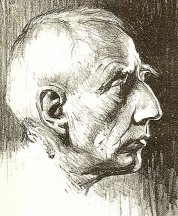
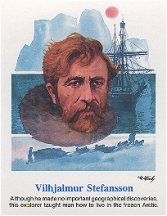
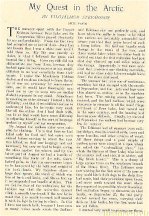
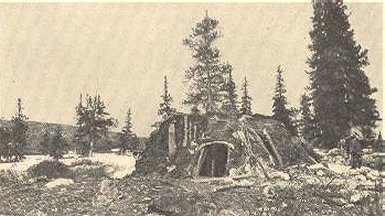
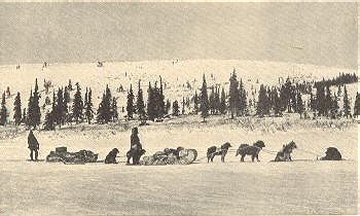
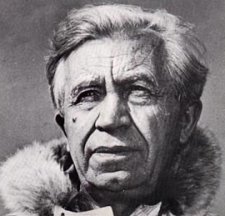 Before leaving
North Dakota, Stefansson had met William Wallace Fenn and Samuel Eliot,
both of whom had seen potential in the young man to become a Unitarian
minister. They offered to fund his studies at Harvard Divinity School.
Stefansson's passion, however, lay beyond the realm of conventional studies.
After aborting his theological studies upon the completion of one year,
he entered the world of anthropology. In 1906, Stefansson left the divinity
school to join the Anglo-American Polar Expedition, and traveled to the
Arctic. Ever the adventurer, he neglected to make contact with his colleagues
and spent the winter months among the native Inuit of Tuktoyyaktut, learning
from the people how to hunt and fish.
Before leaving
North Dakota, Stefansson had met William Wallace Fenn and Samuel Eliot,
both of whom had seen potential in the young man to become a Unitarian
minister. They offered to fund his studies at Harvard Divinity School.
Stefansson's passion, however, lay beyond the realm of conventional studies.
After aborting his theological studies upon the completion of one year,
he entered the world of anthropology. In 1906, Stefansson left the divinity
school to join the Anglo-American Polar Expedition, and traveled to the
Arctic. Ever the adventurer, he neglected to make contact with his colleagues
and spent the winter months among the native Inuit of Tuktoyyaktut, learning
from the people how to hunt and fish.
